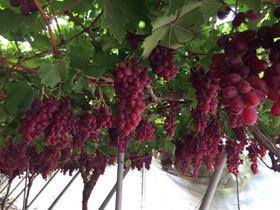
The South African Table Grape Industry (SATI) has reported that the country put together a good table grape crop of just over 62m cartons this season, despite producers facing the worst drought ever recorded in the Western parts of the country.
According to Fanie Naudé, newly elected chairperson of the SATI board, the grape season ended with an 8 per cent drop compared to last year’s record export crop of 67.5m cartons. “Despite this decrease a good crop was realised amidst the third year of drought faced by three of our five production regions.
“Because there was sufficient water in the two early summer rainfall production regions, namely the Northern Provinces and Orange River Region, we were convinced the harvest would be bigger,' Naude explained. 'In the end the Orange River region was hampered by smaller berries and lower bunch weights, and as a result they packed 7 per cent less than last season. The summer rains did not affect the harvest in the Northern Provinces Region, which reached a record 6m cartons.”
This was the only region which improved on last year’s crop, SATI confirmed, adding that the Olifants River region experienced heat waves early in December that caused damage to the grapes.
In addition the canal supplying irrigation water ran dry leading to a nearly 30 per cent drop in volumes compared to last season.
Individual producers in this region, as well as in the Berg River Region, were the hardest hit by the drought. Some growers lost a large portion of their crop. The Berg River volumes were down by just under 16 per cent, which was slightly better than estimated at the beginning of the season.
SATI said the late Hex River Region had a close-to-normal season finishing just under 8 per cent lower than last season. Red grapes initially struggled with colour development, however this changed dramatically as cooler nights set in during March. This contributed to a longer than expected tail end of the season boosting the region’s volumes.
The South African rand was much stronger this season, leading to lower export earnings, the group added. “For the first time in years markets were reasonably stable. This was as a result of a challenging season in several Southern Hemisphere countries.”



